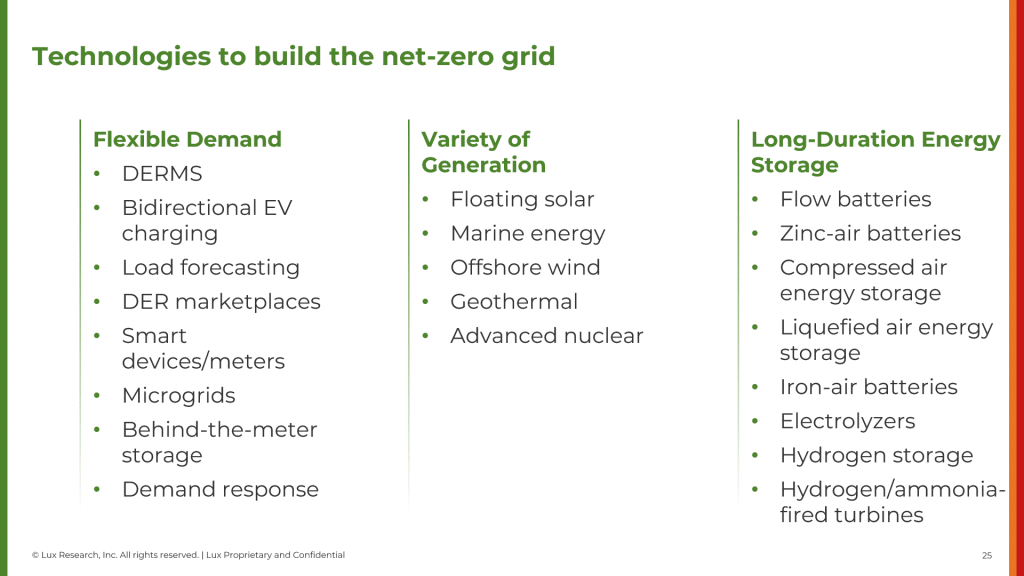The recent Lux Research webinar “The Top Technologies Enabling the Net-Zero Grid of the Future” outlined the challenges in moving to a net-zero power grid and identified which technologies are best suited to solve those challenges. Lux Research Director Chris Robinson outlined the three solutions needed to enable zero-carbon electricity:
- Long-duration energy storage (the ability to store electricity for days, weeks, or even months at a time)
- Variety of generation (tapping into a variety of sources of generation to improve reliability)
- Flexible demand (leveraging flexibility reduces peak load)
Today’s power grid is undergoing a seismic shift in how we generate power and manage the grid. Whereas just one decade ago, most generation capacity added to the grid was fossil-fuel based, renewable power now makes up 90% of new capacity globally. Managing the grid while integrating intermittent renewables is one of the great challenges in the energy transition.
Electrification is a key pathway to decarbonizing the global economy, and we will need a lot of electricity. The biggest challenge with renewable energy is managing short-term intermittency, in which you need lots of power but consume little energy to manage short-term fluctuations. Systemic changes are required in how we plan and operate the electrical grid.
Chris identified the three solutions needed to enable the net-zero grid of the future and outlined different technologies within those solutions that are opportunities in zero-carbon electricity.

Flexible sources of demand can be turned off to reduce peak load during times of congestion. The key technologies are distributed energy resource management systems (DERMS), bidirectional electric vehicle (EV) charging, load forecasting, DER (distributed energy resources) marketplaces, smart devices/meters, microgrids, behind-the-meter (BTM) storage, and demand response.
A variety of generation technologies include:
- Marine power (harvesting energy from wave and tidal motion; varies with wave height and tides)
- Geothermal power (using geothermal heat to power turbines with near-flat generation profile)
- Nuclear power (using fission for heat with flat generation profile)
Energy storage can stow renewable energy produced when demand is low and deploy it when demand is high. The key technologies are flow batteries, zinc-air batteries, compressed air energy storage, liquefied air energy storage, iron-air batteries, electrolyzers, hydrogen storage, and hydrogen-/ammonia-fired turbines.
Key Takeaways:
- Effective load carrying capability is a crucial concept to consider for net-zero grids.
- Utilities should plan for increased demand flexibility via EV charging, distributed solar, and BTM energy storage.
- Opportunistically pursue long-term projects with regulatory support and that leverage existing infrastructure.
Join Lux Research Director Chris Robinson as he provides an overview of the challenges in the net-zero power grid of the future, outlines the different technologies for the net-zero grid, and charts the path for how to build a reliable net-zero grid. Register today to watch the on-demand webinar “The Top Technologies Enabling the Net-Zero Grid of the Future“!
